Solar eclipse of July 31, 1981
| Solar eclipse of July 31, 1981 | |
|---|---|
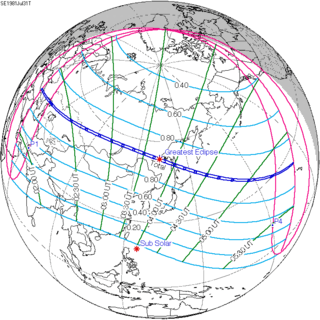 Map | |
| Type of eclipse | |
| Nature | Total |
| Gamma | 0.5792 |
| Magnitude | 1.0258 |
| Maximum eclipse | |
| Duration | 122 sec (2 m 2 s) |
| Coordinates | 53°18′N 134°06′E / 53.3°N 134.1°E |
| Max. width of band | 108 km (67 mi) |
| Times (UTC) | |
| Greatest eclipse | 3:46:37 |
| References | |
| Saros | 145 (20 of 77) |
| Catalog # (SE5000) | 9467 |
A total solar eclipse occurred on July 31, 1981. A solar eclipse occurs when the Moon passes between Earth and the Sun, thereby totally or partly obscuring the image of the Sun for a viewer on Earth. A total solar eclipse occurs when the Moon's apparent diameter is larger than the Sun's, blocking all direct sunlight, turning day into darkness. Totality occurs in a narrow path across Earth's surface, with the partial solar eclipse visible over a surrounding region thousands of kilometres wide. The path of totality went through the Turkey and Soviet Union.
Related eclipses
Solar eclipses of 1979-1982
Each member in a semester series of solar eclipses repeats approximately every 177 days and 4 hours (a semester) at alternating nodes of the Moon's orbit.
| Descending node | Ascending node | |||||
|---|---|---|---|---|---|---|
| Saros | Map | Saros | Map | |||
| 120 | 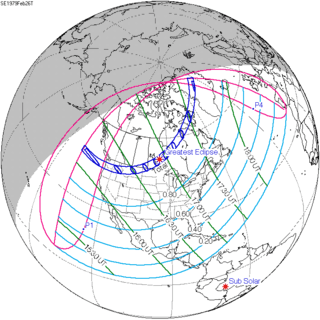 February 26, 1979 Total |
125 | 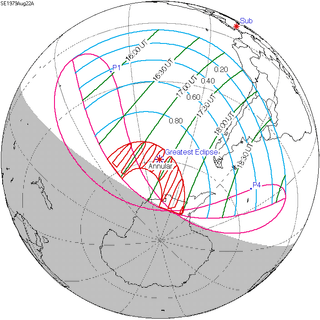 August 22, 1979 Annular | |||
| 130 |  February 16, 1980 Total |
135 | 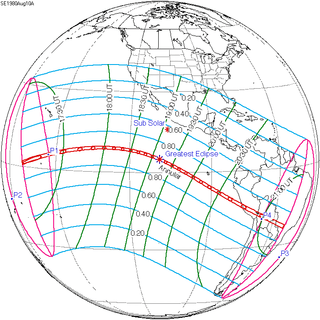 August 10, 1980 Annular | |||
| 140 |  February 4, 1981 Annular |
145 |  July 31, 1981 Total | |||
| 150 | 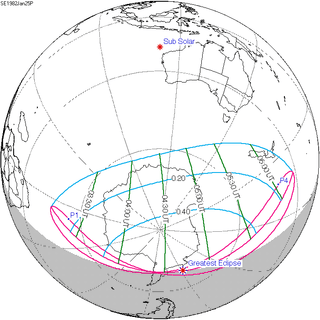 January 25, 1982 Partial |
155 |  July 20, 1982 Partial | |||
| Partial solar eclipses on June 21, 1982 and December 15, 1982 occur in the next lunar year eclipse set. | ||||||
Saros 145
This solar eclipse is a part of Saros cycle 145, repeating every 18 years, 11 days, containing 77 events. The series started with partial solar eclipse on January 4, 1639, and reached a first annular eclipse on June 6, 1891. It was a hybrid event on June 17, 1909, and total eclipses from June 29, 1927 through September 9, 2648. The series ends at member 77 as a partial eclipse on April 17, 3009. The longest eclipse will occur on June 25, 2522, with a maximum duration of totality of 7 minutes, 12 seconds. [1]
| Series members 16–26 occur between 1901 and 2100 | ||
|---|---|---|
| 16 | 17 | 18 |
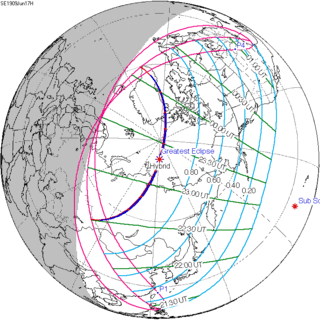 June 17, 1909 |
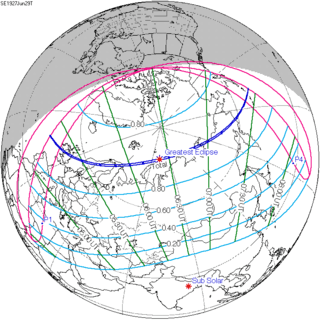 June 29, 1927 |
 July 9, 1945 |
| 19 | 20 | 21 |
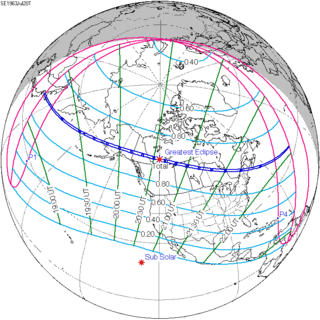 July 20, 1963 |
 July 31, 1981 |
 August 11, 1999 |
| 22 | 23 | 24 |
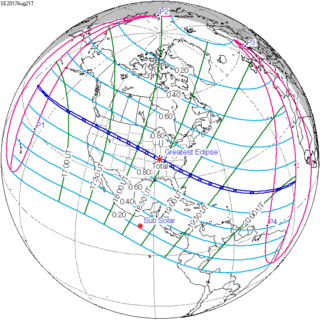 August 21, 2017 |
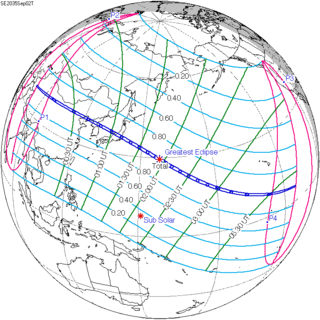 September 2, 2035 |
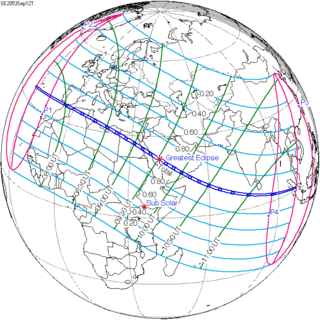 September 12, 2053 |
| 25 | 26 | |
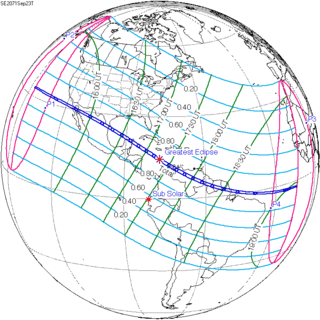 September 23, 2071 |
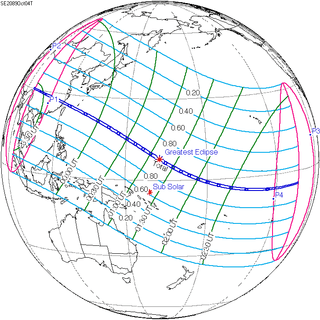 October 4, 2089 | |
Metonic series
The metonic series repeats eclipses every 19 years (6939.69 days), lasting about 5 cycles. Eclipses occur in nearly the same calendar date. In addition the octon subseries repeats 1/5 of that or every 3.8 years (1387.94 days).
| 21 eclipse events between July 31, 1924 and July 31, 2000 | ||||
|---|---|---|---|---|
| July 31-Aug 1 | May 19-20 | March 7 | December 24-25 | October 12 |
| 115 | 117 | 119 | 121 | 123 |
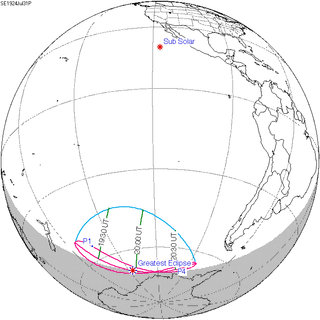 July 31, 1924 |
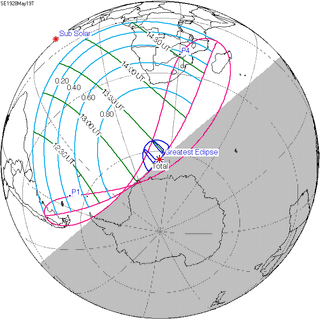 May 19, 1928 |
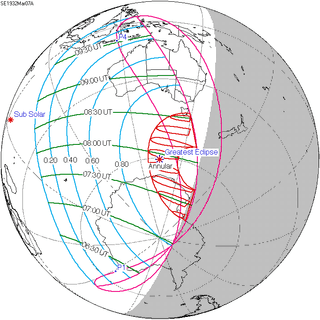 March 7, 1932 |
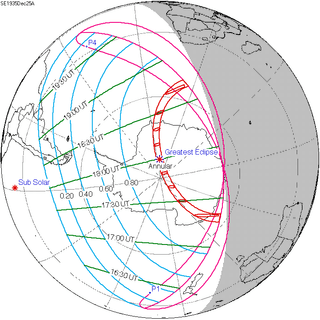 December 25, 1935 |
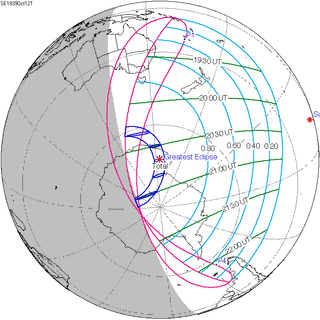 October 12, 1939 |
| 125 | 127 | 129 | 131 | 133 |
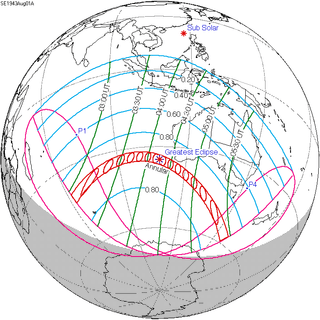 August 1, 1943 |
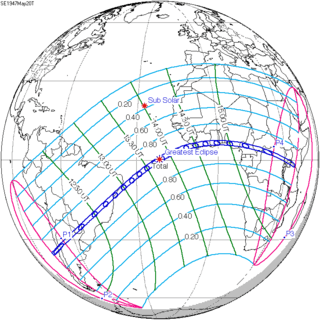 May 20, 1947 |
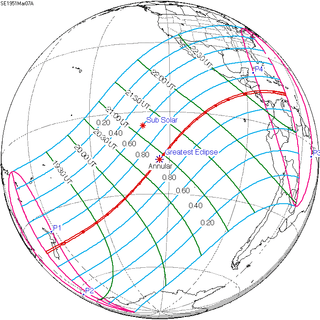 March 7, 1951 |
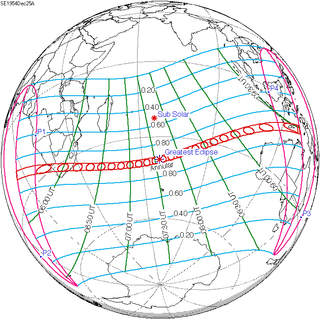 December 25, 1954 |
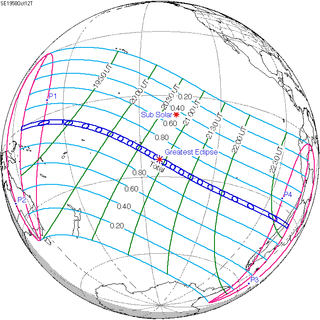 October 12, 1958 |
| 135 | 137 | 139 | 141 | 143 |
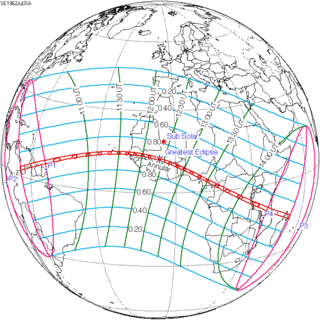 July 31, 1962 |
 May 20, 1966 |
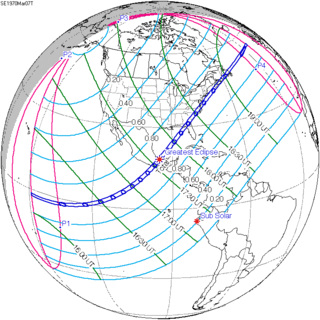 March 7, 1970 |
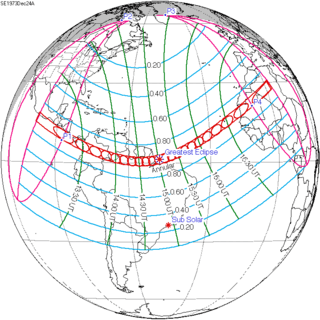 December 24, 1973 |
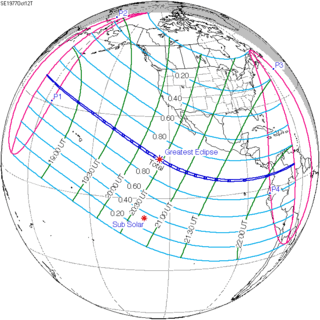 October 12, 1977 |
| 145 | 147 | 149 | 151 | 153 |
 July 31, 1981 |
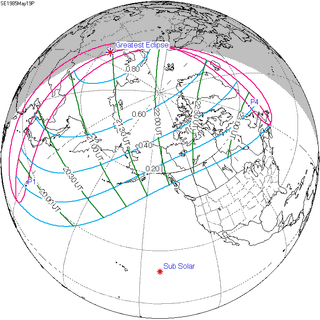 May 19, 1985 |
 March 7, 1989 |
 December 24, 1992 |
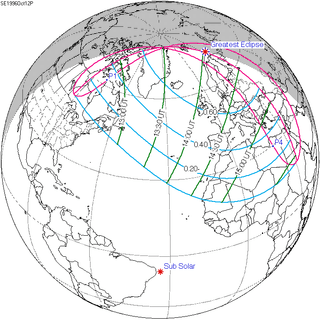 October 12, 1996 |
| 155 | ||||
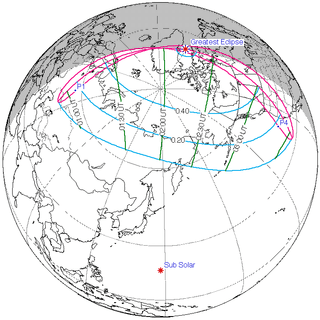 July 31, 2000 | ||||
References
- ↑ Espenak, Fred (Project & Website Manager), Statistics for Solar Eclipses of Saros 145, NASA, updated 2009 September 26.
External links
- Earth visibility chart and eclipse statistics Eclipse Predictions by Fred Espenak, NASA/GSFC
- Solar Corona Shape
Photos:
- Prof. Druckmüller's eclipse photography site: Solar eclipse of July 31, 1981
- Prof. Druckmüller's eclipse photography site: Solar eclipse of July 31, 1981 (Fe XIV and Fe X images)
- In Russia
- In Russia (2)
| Wikimedia Commons has media related to Solar eclipse of 1981 July 31. |
